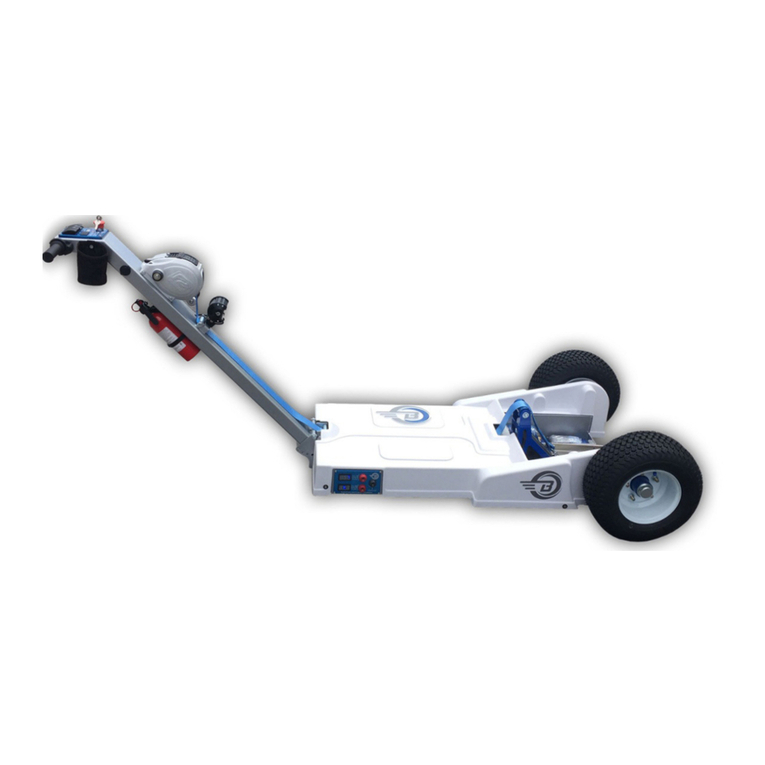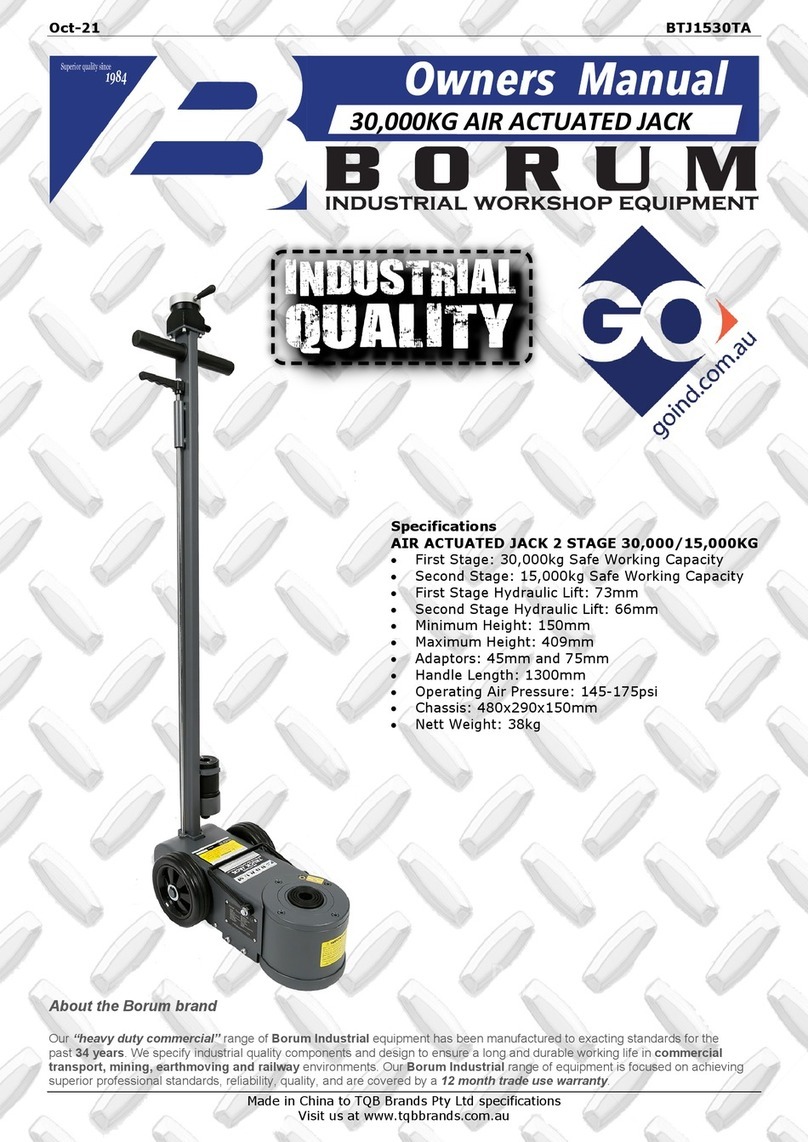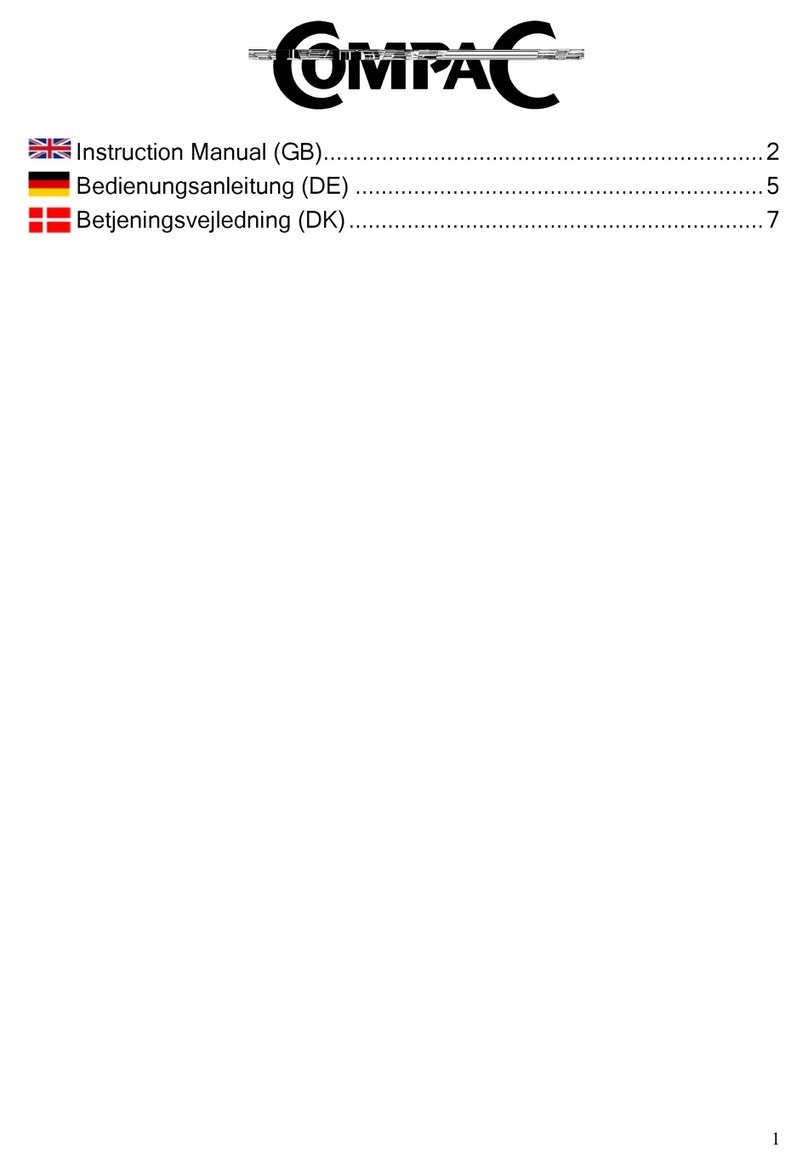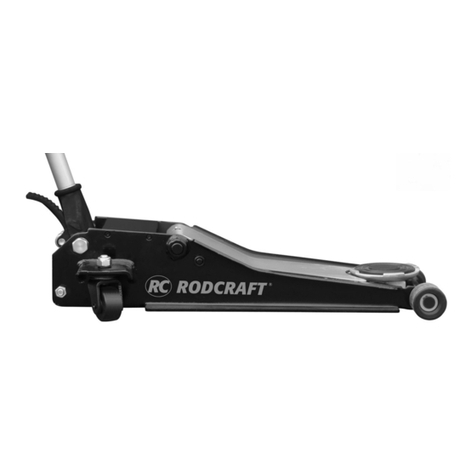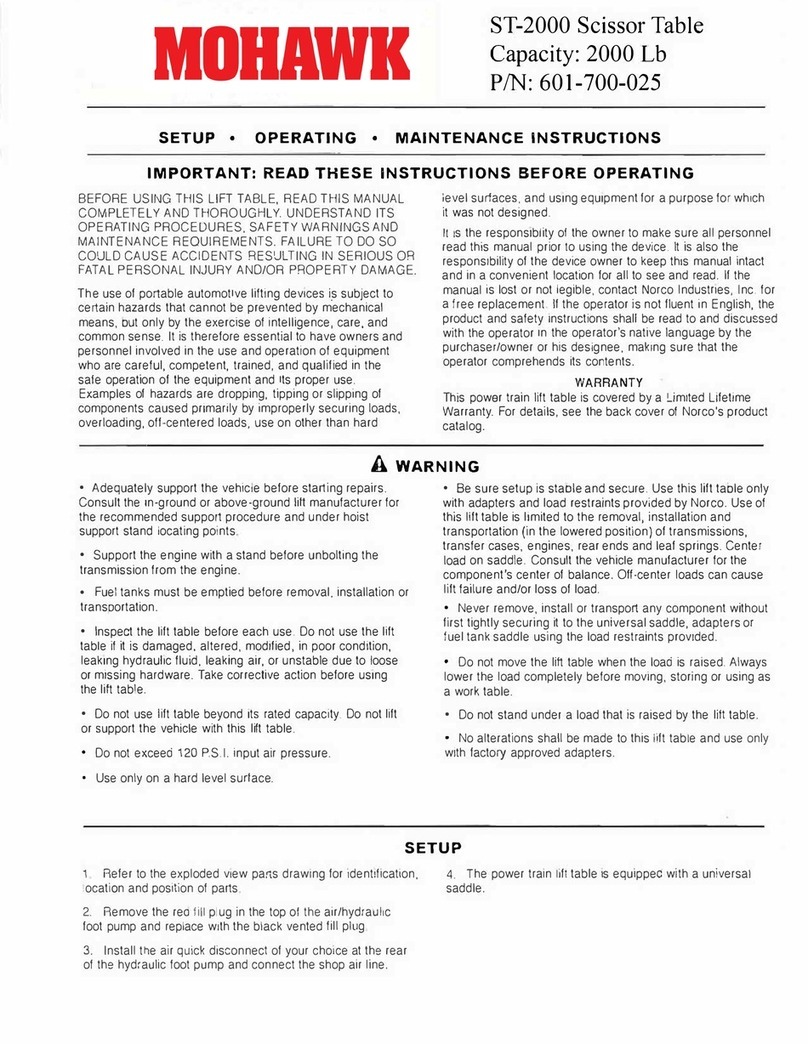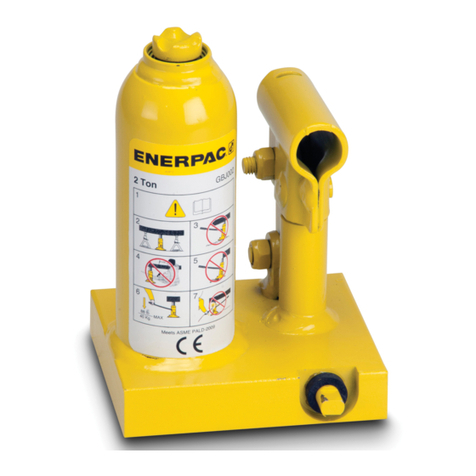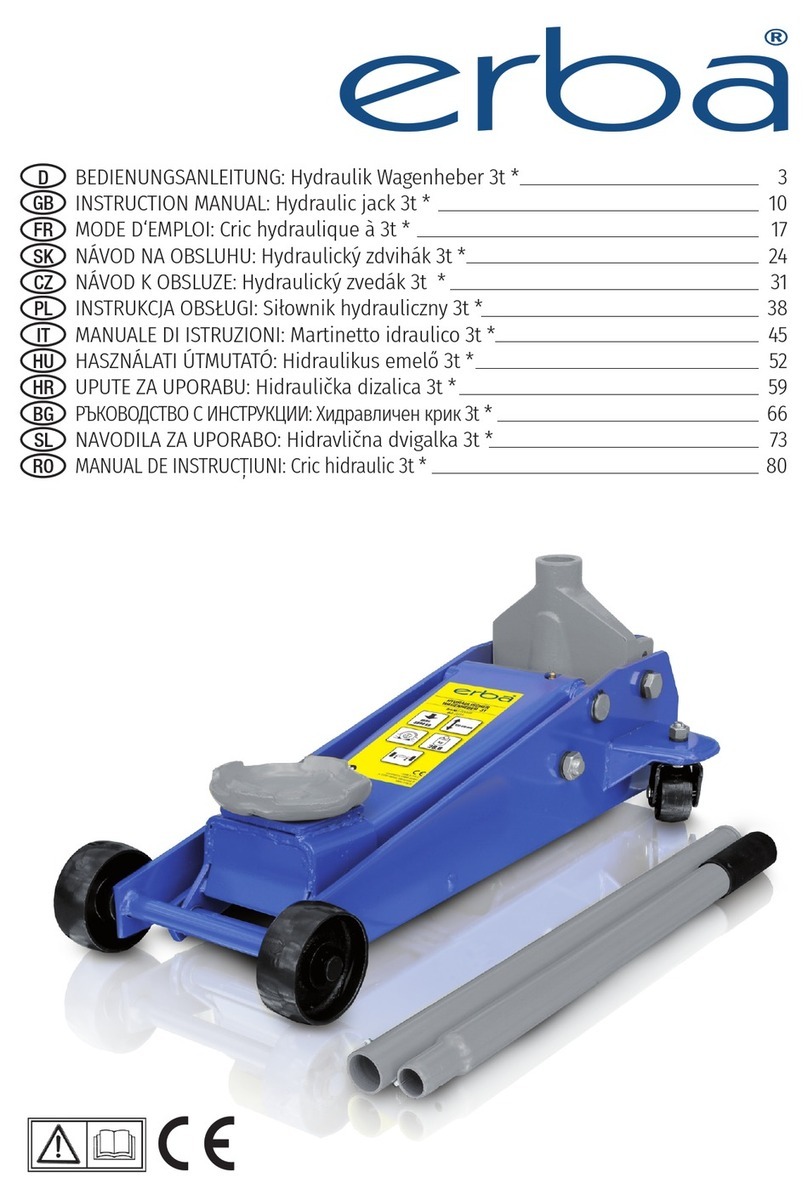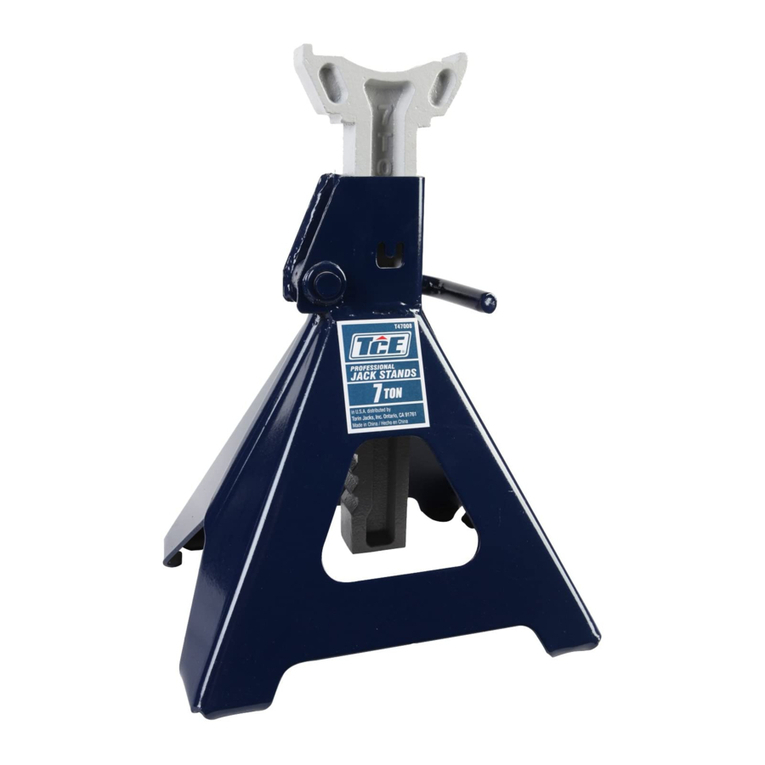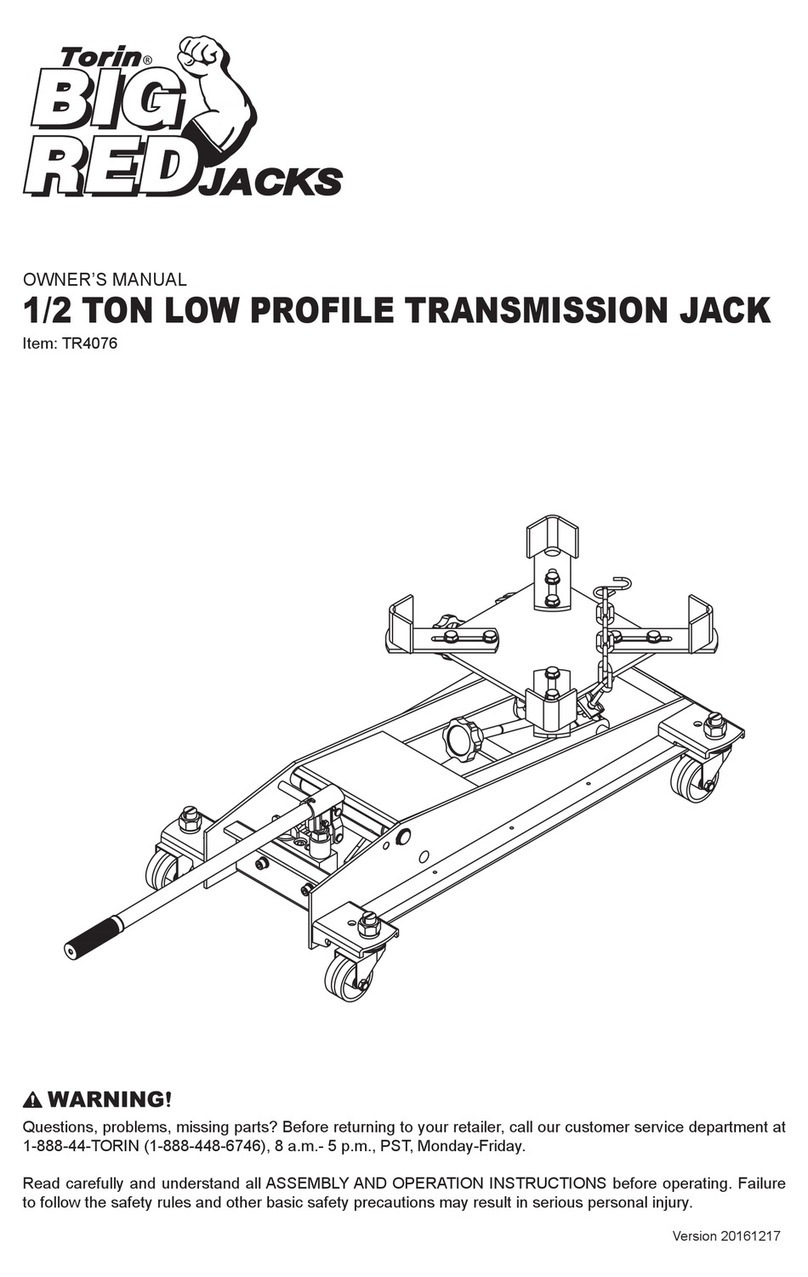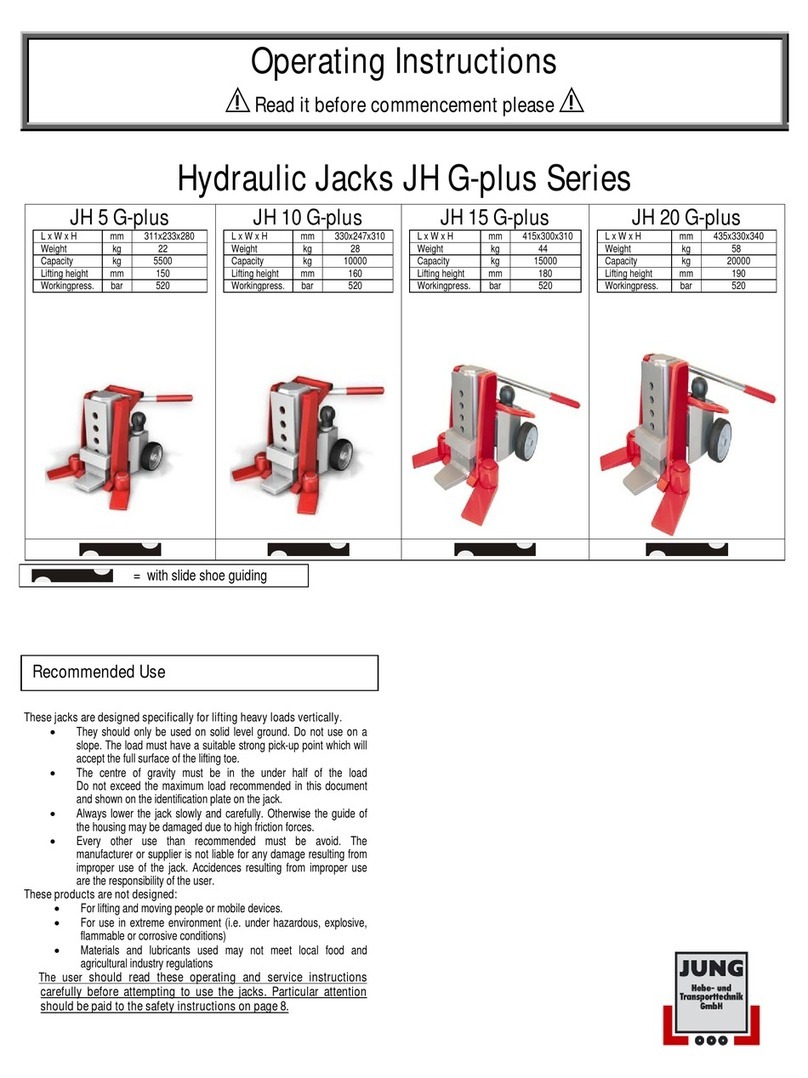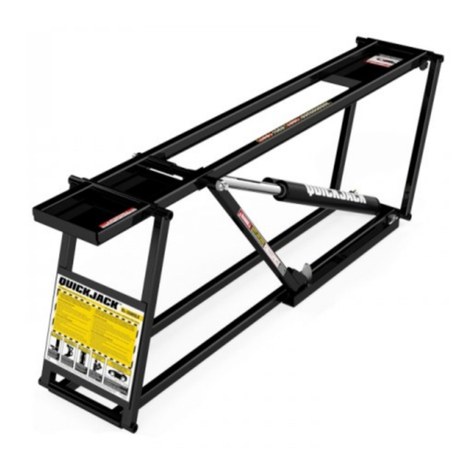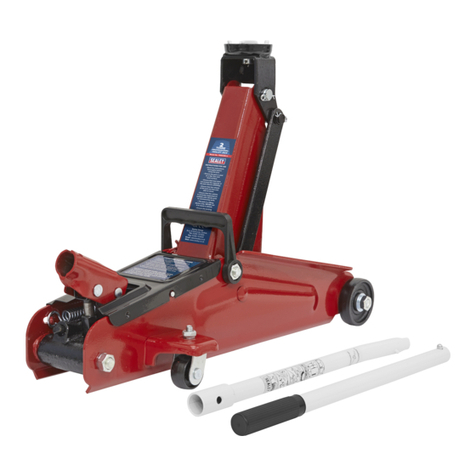Best Tugs ALPHA A2 User manual

ALPHA
USER MANUAL
A2 and A3
Best Tugs
Because Your Pla ne Deserves It


252 West 3560 North
Spanish Fork, UT 84660
800.914.2003
INTRODUCTION
Best Aviation
Products
At Best Tugs™, we pride ourselves on building the most innovative
and advanced tugs in the world. We work diligently to ensure that
the quality and workmanship of your tug exceeds your expectations
and are confident that you will see the difference in every part of
your Best Tugs™experience.
We designed this guide to provide you the information needed to
make your experience even better… and while we are confident that
this guide will answer your questions, we are always here to chat
with you on the phone. You can reach us at 800-914-2003.
Thank you again for choosing Best Tugs™.

1
Please read these instructions
before beginning.
For any questions
call us at 800.914.2003
Tools Needed:
• Phillips Head
Screwdriver
(Drill/Impact is easiest)
• 7/16 Socket
1. Start by removing the screws marked
with red paint from the lid marked
with red “1”. Remove the top lid from
the crate.
2. On side 4 (FIG 1) of the crate, cut the
two black retaining straps.
3. On the opposite end of the crate, the
required wall is marked with a red
“4” and stripes, remove the screws
securing the end wall to the crate.
Remove the end wall. (FIG 2)
4. In the crate, cut the band securing
the control arm.
5. Grab the tug’s handle and pivot the
tug up with the tug’s weight resting
on the tires.
6. Push the master switch to the “on”
position.
7. Left thumb pressure moves the tug
backward. Slowly increase pressure
on the throttle with your left thumb
and back your tug out of the crate.
FIG 2
33
11
22
44
FIG 1
UNCRATING INSTRUCTIONS

2
8. Once out of the crate, carefully
rotate your tug forward and rest the
aluminum base on the ground.
Be sure to place foam from the crate
or some other padding between the
aluminum base and the ground to
avoid scuffs. (FIG 3)
9. Remove the kickstand from inside of
the crate. With the provided 5/32
Allen wrench, screw the kickstand to
the back of the Alpha’s control arm.
10. Observing all safety precautions,
attach your Best Tugs™tug to your
aircraft.
11. Most importantly, enjoy your new
Best Tugs™ Tug!
Please Email cool pictures of
your tug and plane to sales@
besttugs.com. You may see
it on our website or social
media. (By sending images, you
expressly permit us to use these
images for marketing purposes.)
FIG 3
UNCRATING INSTRUCTIONS
Continued
Note: Foam filed tires have
a screw in the tire from the
factory. It is safe to remove the
screw.

3
WHAT’S IN THE CRATE?
Adapters may not be included depend-
ing on your plane type. If you have more
planes you’d like to move with your
tug, give us a call, and we can ship the
appropriate adapters out to you.
Quick Connect Pins - 3
Charger
AdaptersConnecting Arms
Items Depending on Aircraft
3
1
2
Storage slot when pivoting

4
1. POWER SWITCH
Turns tug on and
off. Do not leave tug
turned on for long
periods of time or while
charging to avoid
draining the batteries
2. LED LIGHT
Make sure this switch
is off while the tug is
charging.
3. HIGH / LOW (A3 only)
High will move your
plane at a higher
speed. Low is great
for safe movements
around your hangar.
4. OVER CENTER LOCK
The locking arm travels
in an arching motion.
When locking, make
sure the arm is fully
rotated down and
secured in place.
5. VARIABLE SPEED
THROTTLE
Right thumb pressure
moves tug forward,
left thumb pressure
moves tug backward.
6. DIGITAL READ OUT
Displays your tug’s
state of charge.
3
2
5
1
4
INITIAL USE
We strongly recommend using your tug without an aircraft attached to get used
to the controls and movements; this is a very user-friendly system, but it can take
a bit of practice to get familiar with it initially. Make sure you are comfortable
with the throttle, maneuverability, and functionality of the tug before moving
your plane.
CONTROL PANEL FUNCTIONS
6

5
First Time Set Up
Right Connecting Arm - Pull out Drop
Pin and spin the Slide out, so the open
end is as close as possible to the center
of the connecting arm. (FIG 1)
Left Connecting Arm - Repeat step
one process on left arm.
1. Rotate locking arm upwards to open
right connecting arm and move the
tug, position the Slides, so they are
close to the tow pin.
2. Close the arms. (FIG 2 & 3) Slides are
not expected to close on the tow pin
in this step.
3. Twist Slides until firmly attached to
the tow points. Correct set up should
leave very little to no slop on the
connection.
4. Wiggle tug slightly to confirm the
pins are firmly cupped and secured.
FIG 2
Drop PinDrop Pin
Please familiarize yourself with how long it takes for your plane to ramp up/down
and stop; that “coast” when slowing is due to the software that protects your
nose gear from unnecessary damage and stress. Take the time to get used to this
feature and be aware of it as you move your aircraft.
Check your plane’s POH to verify the maximum turn radius for your particular
nose gear. The tug can turn your plane at an angle that may exceed the nose
gear’s maximum turn radius. Best Tugs™ assumes no responsibility for any
damage caused by the tug operator misusing the equipment. As the operator,
you have the responsibility to be familiar with your tug, your plane, and their
specific limitations.
FIG 1
Check the plane’s surroundings, remove any
obstructions, verify that your path is clear, and
your propulsion systems (prop), wings, and tail
clear. Please verify that your wheel is secure on
the tug, including strapping it down. Finally,
remove the wheel chocks. You are ready to
move your plane.
Slide

6
Most users prefer their tug to pivot while
pulling their aircraft because it eliminates
the need to pick up and move the tug
when turning. The same feature that
makes pulling so incredibly easy can make
pushing your tug feel awkward at first; it
drives like backing up a trailer, meaning it
drives the opposite of where you turn.
Once you are used to the throttle, start/
stop speeds, and movements of the tug,
we strongly recommend you push/pull
your plane in an open area to familiarize
yourself with how your plane moves.
Pushing may take a few tries before you’re
comfortable, but once you find your
system, it is easy.
If you prefer to use your Best Tugs™ tug
with the pivoting base locked, place pin
3 back in the lock slot. Make sure the pin
seats as shown. (FIG 4)
Go to besttugs.com/pages/videos for
instructional videos and tips for moving
your plane.
1
Storage slot when pivoting
FIG 4
First Time Set Up
Continued

7
If anything everIf anything ever
looks wrong or likelooks wrong or like
it may damage yourit may damage your
aircraft,aircraft,
please call us.please call us.
800.914.2003800.914.2003
Loading Your Plane
Double check your plane to
make sure the tug is correctly
attached and the First Time Setup
instructions were followed.
1. Drive up to within one to two
feet of the airplane. Use locking
arm to open left connecting arm.
Turn power OFF and manually
push tug into position. We
strongly recommend following
this step in case you accidentally
bump the throttle while close to
your aircraft.
2. Position the tug with arms on
either side of the plane.
3. Insert the right arm into/onto tow
connection.
4. Use locking arm to close the left
connecting arm.
Moving Your Plane
Check the surroundings of the plane,
remove any obstructions, and verify you
have removed the wheel chocks. We
recommend slow and steady movements
when moving your plane. The right thumb
control moves the tug forward, and the left
thumb moves the tug backward. As you are
moving your plane, be sure your nose gear
can make the turns you are taking.
As the operator,
you are responsible
for knowing the
limitations of your
specific aircraft.

8
1. Chock the aircraft’s mains.
2. Make sure the tug is in line with
your plane.
3. Rotate locking arm upwards to
open the arms. (FIG 5)
4. Make sure the connecting arms
are going to easily clear your plane
as you pull the tug away from the
aircraft.
Switching Out Arms
1. Pull the detention pin holding the
connecting arm in place and slide
out connecting arm.
2. Insert new connecting arm,
reinsert pin.
Attaching Trailer
Attachment (option)
1.
Remove both connecting arms with
accompanying pins from the tug.
2. IInsert trailer attachment
connections into connecting arm
slots. Insert pins to secure the
attachment in place. (FIG 6)
FIG 6
FIG 5
Unloading Your Plane

9
3. To change the ball size, push
down, and rotate the center of
the ball counter-clockwise (FIG
7), the center springs up, freeing
the ball. Put on the desired size,
push the center down, and
rotate clockwise to lock the ball
into place.
Storage
Store your tug in an area that is dry
and safe from the elements. Limited
exposure to rain and snow does
not affect the electrical systems.
However, we do not recommend
extended exposure.
If you do not plan on using your
tug for an extended time, leave
your tug plugged in, and our
smart charger can take care of the
battery. Always turn off your tug
and accessories.
Maintenance
Tighten the wheel lugs once
a quarter to 70 ft/lbs. The
recommended tire pressure for
inner tube equipped tires is 45
PSI. The caster wheel needs to
be re-greased every two years
for continuous use.

10
Battery Care
Your tug has a smart charger with trickle charge and battery maintenance cycles.
To charge, plug the charger cord into the tug, then the power cord into a standard
power outlet. You cannot overcharge when using the included charger.
Always turn off the master switch when charging.
We suggest charging your tug when the battery falls below around 70% (at rest)
for optimal battery life (for sure before 30% at rest). Note: The tug continuously
and instantaneously calculates the state of charge, which is why the percentage
fluctuates while moving your plane. We have seen as low as a 10% charge
displayed when using a fresh battery and moving a heavy plane. To read the
resting battery’s charge, leave the tug at rest for at least 60 seconds. We have seen
a 10% drop from freshly charged just by moving the tug in and out of the hanger.
The discharge rate is non-linear.
If you notice shorter times needed between charges, your batteries are beginning
to wear out.
Lead Acid batteries are surprisingly delicate—damaged by direct and indirect
effects: environmental, user induced, misapplication, and on and on. For instance,
charging with a voltage above 14.4 volts or allowing the battery to discharge
completely are the two most common ways to damage a lead-acid battery.
Even new batteries can be ruined in just a few weeks by being discharged too
much or left uncharged for too long; for this reason, Best Tugs cannot warranty the
batteries as we have no control over the end-users’ actions.
Modern microprocessor-based smart chargers use switching circuits; they
are lightweight and designed to protect themselves against reverse polarity
connection. They also have an annoying feature of not charging if the battery’s
voltage is below some arbitrary value. If you left the tug on and it no longer
charges, a cheap 12-volt car charger with a volt-meter is your best option to try and
restore the battery. Note: Most local battery/automotive stores carry replacement
batteries.
To recover the battery pack or diagnose their condition:
• Connect a twelve (12) Volt charger with a meter across the terminals of each
battery, one battery at a time.
• If you get a reading of zero (0) volts, a short circuit has occurred, replace the
battery.
• If your battery reads less than 10.5VDC when charging, then the battery has a
dead cell, replace the battery
• The battery charger indicates fully charged, but the voltage is below 12.4VDC?
The battery is sulfated, replace the battery soon.
Are all batteries fully Charged? The tug should be able to resume normal functions.
If not, call us.

11
Replacement Battery Specs.
12 Volt 18 Ah Sealed AGM Battery.
Acceptable brands include Duracell, UPG, Bright Way Group,
Panasonic, Interstate, and others.
(The previous are registered trademarks of the respective companies.)
Length: 7.17 in
Width: 3.03 in
Height: 6.57 in
Voltage: 12
Lead Acid Type: Deep Cycle
Capacity: 18ah
Chemistry: Lead Acid
Lead Acid Design: AGM
Product Category: Sealed Lead Acid
Product Subcategory: Deep Cycle
Terminal Type: M6 Nut and Bolt, NB, Nut, and Bolt.
Screw 3 Screw 4
FIG 8
Screw 2
Screw 1
To access the batteries,
take off the four (4) Allen
screws with a 5/32” wrench
which will release the cover.
(FIG 8)

12
Critical Cautions
Our tugs do not instantly stop. This feature is to protect your aircraft’s
landing gear. Failure to compensate for this soft stop can cause damage to
your aircraft. “Slowly” is the word to live by when you are in tight spaces or
loading the tug. We recommend practicing with the tug before using it on
your aircraft to allow familiarization with this soft stop feature. Exception:
E-Stop stops the tug NOW! An emergency stop can damage the landing
gear and damage the tug’s motor control module. The “E” in E-stop stands
for EMERGENCY.
Chock your mains! You don’t want to push your aircraft into the hanger
wall...
During operation, be aware of your surroundings. Never put your-
self between the tug and any object! A tug capable of pushing thousands
of pounds of aircraft can push you against an obstacle with thousands of
pounds of pressure. There is a risk of serious injury, death, or dismember-
ment. Proper operation is your responsibility.
Best Tugs™ tugs do not have secondary brakes. The motor/trans-
mission provides all braking. Your aircraft can roll freely if your transmission
fails. As the operator, it is your responsibility to keep your aircraft within safe
limits. Never move an aircraft on a slope or environment where the loss of
tug breaking would put you or your aircraft in danger.
Exceeding the parameters of the tug can cause future power train
failure. Best Tugs™ tugs load ratings are designed for hard flat and level
surfaces. Use on a slope drastically changes those parameters. The steep-
er the grade, the more energy it takes to move your plane—it is as if the
plane’s load parameter increased. The transmission’s gears have a superior
hardened surface; a one-time event that exceeds the tug’s parameters can
degrade that surface—eventually leading to total failure.
Rough surfaces, such as grass, can increase the rolling resistance of your
tires. The lower your tire pressure, the larger the tire’s contact patch, the
more extreme the tire deflection, resulting in more rolling resistance. It now
takes more energy to move the airplane—which is functionally equivalent (In
regards to the loaded weight charts) to the plane weighing more. Even a ten
percent under-inflation could cause your load to be over the limit—you have
just damaged the gears. Failure is now a matter of when—not if.
DC motors heat up from the inside out. If the casing is hot to your

13
touch, the internal components are probably red hot. The larger the aircraft,
the more energy it takes to move that load, causing heat buildup. Slopes and
rough terrain are like moving a larger aircraft causing more heat buildup.
Moving aircraft long distances also causes heat buildup. Excessive heat build-
up can damage the tug’s motor, drastically reducing the tugs life span. Best
Tugs™ tugs are designed for intermittent use. The larger the tug, with an
appropriately smaller than rated load, the longer a tug can be in continuous
usage. If you must move your aircraft a long-distance, slow down, or pause
now and then (See Loaded Weight Tables) to allow for heat dissipation.
Example 1: You have a tug you bought for your Cirrus SR22, and you do your
buddy a favor and move their King Air—you have just damaged the gears.
Failure is now a matter of when—not if.
Example 2: You used the same tug for your Cirrus SR22, and pulled it up a
3-degree slope—you have just damaged the gears. Failure is now a matter
of when—not if. It would be best if you had used a tug with a higher rating,
such as the commercial version. If you find that you have the wrong tug for
your plane’s environment, please call us and exchange it for the appropriate
model. We have a 30-day exchange policy; you only pay for the price differ-
ence and freight.
Did we mention that you need to chock your mains?
Critical Cautions
A2 Load & Duty Cycle
Degree 1,300 1,950 2,600
0.0 100 100 100
0.5 100 100 82
1.0 100 80 60
1.5 95 63 N/A
2.0 78 52 N/A
2.5 67 N/A N/A
3.0 58 N/A N/A
LOADED WEIGHT
A3 Load & Duty Cycle
Degree 1,800 2,700 3,600
0.0 100 100 100
0.5 100 100 78
1.0 100 76 57
1.5 90 60 N/A
2.0 75 N/A N/A
2.5 64 N/A N/A
3.0 55 N/A N/A

14
TROUBLESHOOTING
QUESTION SOLUTION
The tug was left
on and the
batteries are
dead
A cheap 12 volt battery charger (commonly found at
Walmart) can sometimes save the batteries. If recovery is
unsuccessful, replacement batteries can be purchased at
most battery/automotive stores in the U.S.
The master
switch is “on”
but the tug is not
moving.
There are two possible solutions.
1. The tug will turn off the computer after 20 minutes
of inactivity. To reset the computer, turn the tug’s
master switch off for three seconds and then back
on.
2. Make sure the red E-Stop is not pushed in. The tug
will not turn on unless E-Stop has been twisted out.
I started to move
my plane, but my
tug stopped, a
light is flashing.
See Error Code Translations on page 15 for details.
Optional Accessories
• LED Flood Lamp - A high Intensity LED light to assist in load-
ing and unloading your airplane. The control panel light switch
controls the action of the light when the main power switch is
on. Note: The main power must be on for the LED lamp to light
up.
• Extinguisher – Type BC. Class BC extinguishers handle both
Class B (flammable liquid) and Class C (energized electrical
equipment) threats. See the manual that comes with the extin-
guisher.
• Tundra Package – Better operation on grass fields. No user
interaction required. Proper air pressure must be maintained, or
the inner-tube could slip, ripping the valve stem out. Note: the
tires use a 3.00x4 inner-tube.
• Connecting Arms – options to connect the tug to various
airplanes. Call us at 1-800-914-2003 for more details
• Trailer Attachment - Call us at 1-800-914-2003 for more de-
tails
• Under Glow - LED accent lights. Depending on the selected
options, you have an on/off switch or remote control. Note:
Under-glow only functions when the tug is on.

15
Error Code Translations
Most codes are safely reset by turning the tug off, waiting five
seconds, then back on again. If system fails to reset please contact
Best Tugs™ at 800.914.2003 for assistance.
Blue LED Light off: System powered down after 20 minutes of no
use.
Blue LED Light on: Controller operational, no faults.
All codes have two parts. Count the sequence of flashes (*) to iden-
tify code.
Common codes are blue.
Flashes Meaning
1,1
* *
Aircraft Chocked or Brake Set
1,2
* **
Throttle Fault
1,3
* ***
Speed Limit Fault
1,4
* ****
Low Battery (Charge Required ASAP)
1,5
* *****
Over Voltage (Unplug tug before use)
2,1
** *
Main Contactor Driver Failed Open
2,3
** ***
Main Contactor Stuck, driver fail, or brake coil
2,4
** ****
Main Contactor Driver Failed Closed
3,1
*** *
HPD Fault
3,2
*** **
Brake on (Electromagnetic brake open or shorted)
3,3
*** ***
Pre-Charge Fault (Low Battery)
3,4
*** ****
Brake Off (Electromagnetic Brake open or shorted)
3,5
*** *****
HPD Fault (Throttle was engaged when tug was turned on)
4,1
**** *
Current Fault (controller failure, motor or wire failure)
4,2
**** **
Motor voltage (short in motor or wiring)
4,3
**** ***
EEPROM Failure
4,4 **** **** Power Section Fault

16
Warranty
Best Tugs™DOES NOT WARRANTY BATTERIES
Best Tugs™includes a one (1) year warranty on all parts, including
the drive train, from date of delivery. Warranty excludes labor and
the cost of shipping. Call sales if you want to purchase the optional
extended warranty.
This warranty does not apply to any Best Tugs™component(s)
that have damage caused by, misuse of the vehicle, accidents,
collision or object striking the vehicle, vandalism, fire, explosion,
water damage, customer-applied chemicals to painted surfaces,
improper handling or application, nor does it extend to Best Tugs™
parts which have been repaired or altered outside of Best Tugs™
provided maintenance of an authorized service representative.
Furthermore, any modification of Best Tugs™electrical system MUST
be pre-approved and documented in writing by Best Tugs™. Failure
to do so voids the unit’s electrical component warranty. Best Tugs™
parts which have been repaired or altered outside of Best Tugs™
provided maintenance of an authorized service representative as well
as any modification of a Best Tugs™tugs MUST be pre-approved and
documented in writing by Best Tugs™. Failure to do so voids the
warranty.
Exclusions may apply. Visit BestTugs.com for the full and overriding
Warranty. Exclusions may apply.

252 West 3560 North
Spanish Fork, UT 84660
Release Date: April 22, 2020
or call 1-800-914-2003
Sales Ext 2
Support Ext 3
Best Aviation
Products
This manual suits for next models
1
Table of contents
Other Best Tugs Jack manuals
Popular Jack manuals by other brands
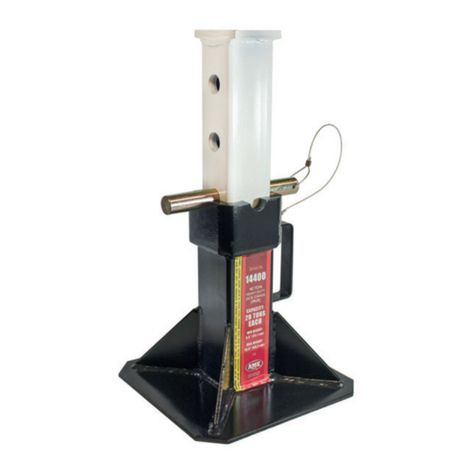
AME
AME 14400 Instruction manual & parts breakdown
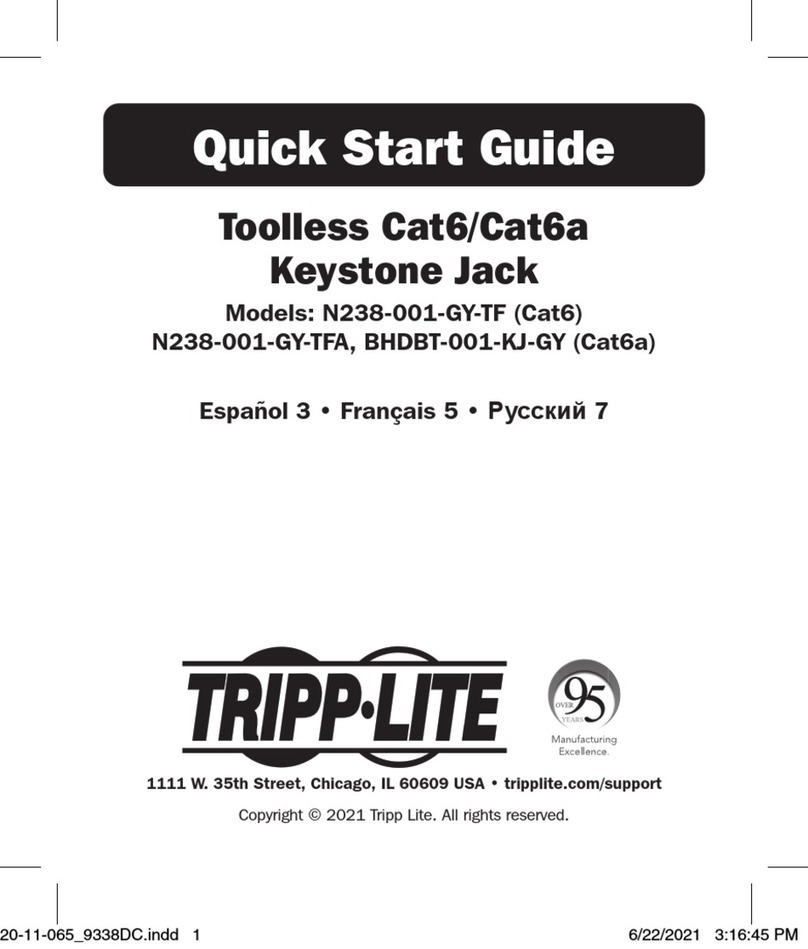
Tripp Lite
Tripp Lite Cat6 quick start guide
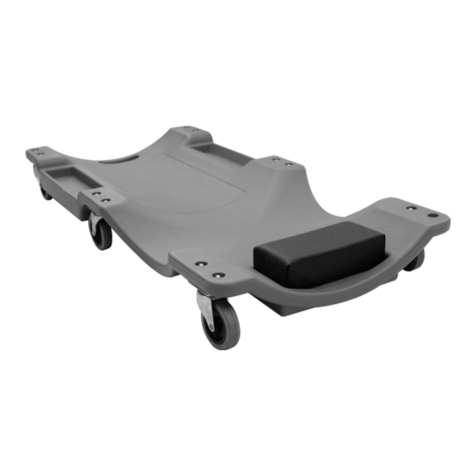
Power Fist
Power Fist 8879942 manual

Black Hawk Automotive
Black Hawk Automotive BH2128 Operating instructions & parts manual
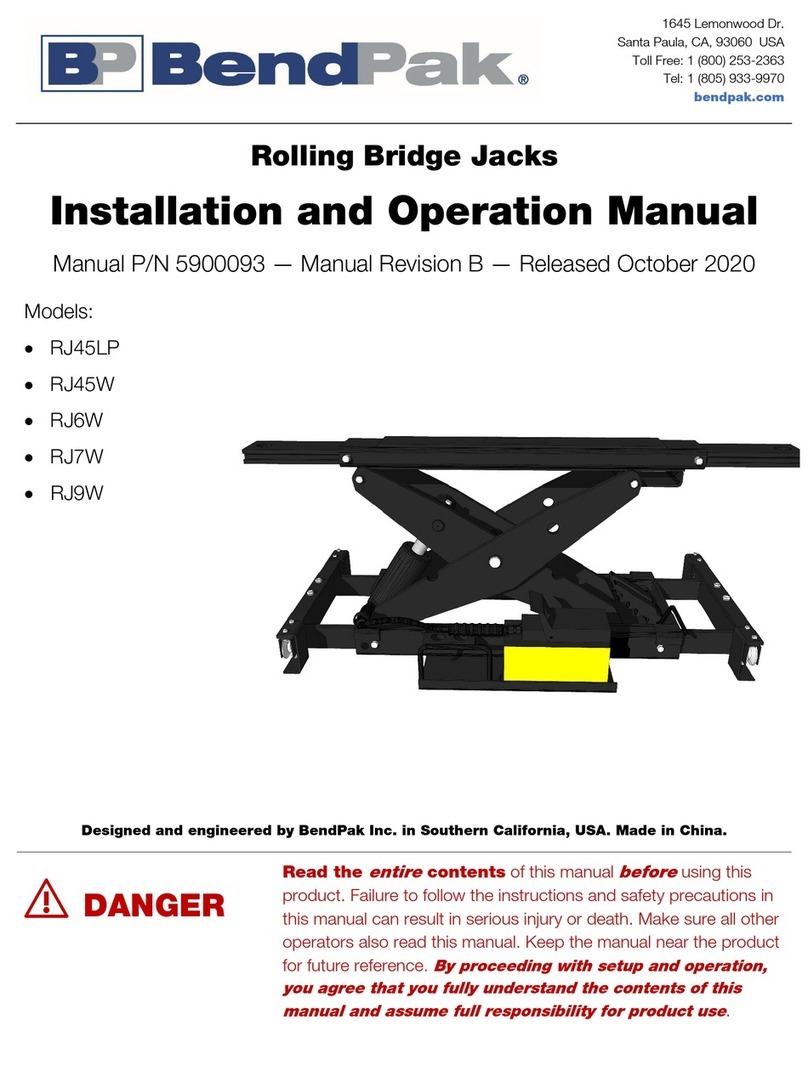
Bend-Pak
Bend-Pak RJW Series Installation and operation manual

Metalworks
Metalworks 754752220 manual
